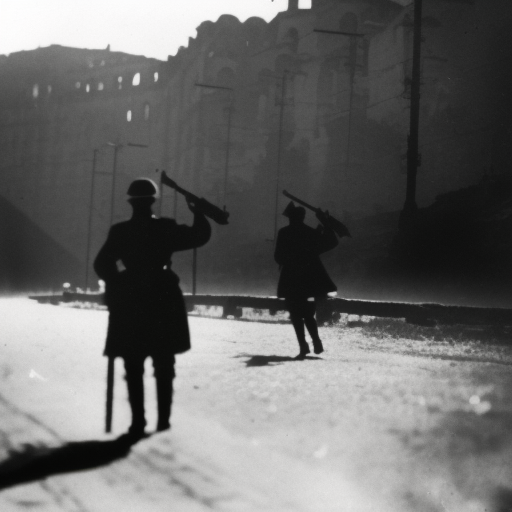Summary: The Italian campaign was a series of military operations during World War II that took place in Italy from 1943 to 1945. It was a joint effort by the Allied forces to defeat the Axis powers and liberate Italy from fascist control. The campaign consisted of several major battles and offensives, including the invasion of Sicily, the Battle of Monte Cassino, and the liberation of Rome.
Invasion of Sicily:
The Italian campaign began with the invasion of Sicily in July 1943. The Allied forces, led by General Dwight D. Eisenhower, launched a massive amphibious assault on the island, aiming to gain control of the Mediterranean and weaken the Axis powers. The invasion was successful, and within a month, Sicily was under Allied control.
Battle of Monte Cassino:
One of the most significant battles of the Italian campaign was the Battle of Monte Cassino. The objective was to capture the strategically important Monte Cassino monastery, which was being used by the Germans as a defensive stronghold. The battle lasted from January to May 1944 and involved intense fighting and heavy casualties on both sides. Despite several failed attempts, the Allies eventually managed to break through the German defenses and capture the monastery.
Liberation of Rome:
After the Battle of Monte Cassino, the Allied forces continued their advance northward, facing stiff resistance from the German troops. In June 1944, the Allies launched a major offensive, known as Operation Diadem, to break through the German defensive lines and reach Rome. After several weeks of intense fighting, the city was liberated on June 4, 1944. The liberation of Rome was a significant morale boost for the Allies and marked a turning point in the Italian campaign.
Continued Fighting:
Despite the liberation of Rome, the Italian campaign was far from over. The German forces retreated to the Gothic Line, a series of fortified positions in northern Italy. The Allies faced difficult terrain and harsh weather conditions as they pushed northward. The fighting continued throughout 1944 and into 1945, with the Allies gradually gaining ground and pushing the Germans back.
End of the Italian Campaign:
By April 1945, the Allied forces had reached the Po River in northern Italy, effectively cutting off the German troops from retreating further. Facing overwhelming odds, the Germans surrendered on May 2, 1945, marking the end of the Italian campaign. The campaign had been a long and costly endeavor, with both sides suffering heavy casualties.
Impact of the Italian Campaign:
The Italian campaign had several significant impacts on the course of World War II. It tied down a considerable number of German troops, diverting resources from other fronts. It also weakened the Axis powers’ control over Italy and paved the way for the country’s liberation. Additionally, the campaign demonstrated the effectiveness of combined arms operations and showcased the bravery and determination of the Allied forces.
In conclusion, the Italian campaign was a crucial military operation during World War II that aimed to liberate Italy from fascist control. It involved a series of major battles and offensives, including the invasion of Sicily, the Battle of Monte Cassino, and the liberation of Rome. Despite facing difficult terrain and fierce German resistance, the Allied forces ultimately succeeded in pushing the Axis powers out of Italy. The campaign had a significant impact on the outcome of the war and demonstrated the effectiveness of combined arms operations.












